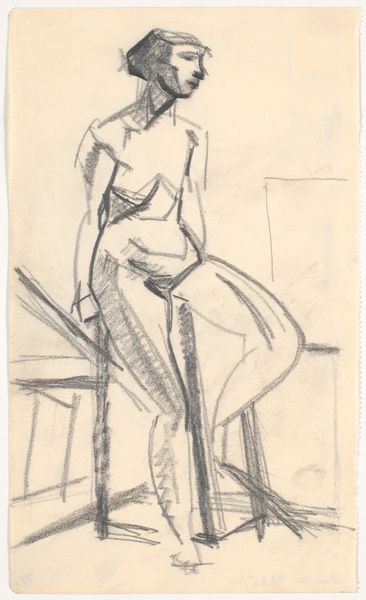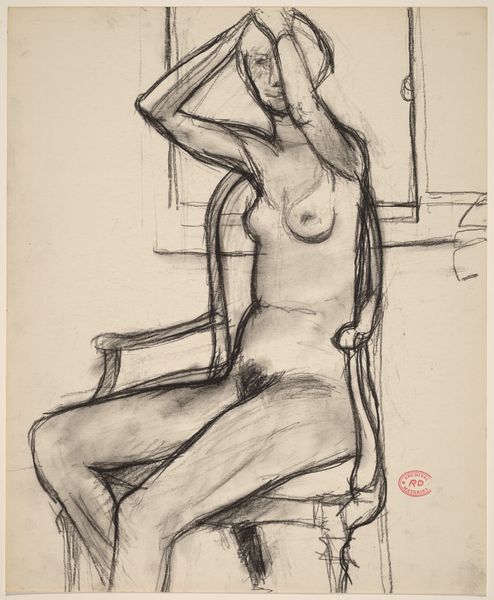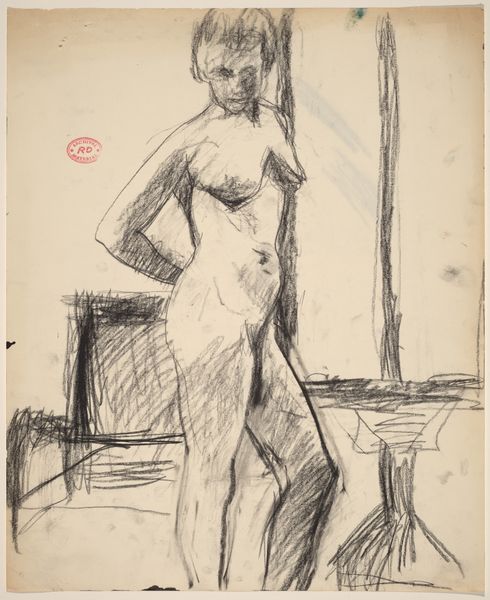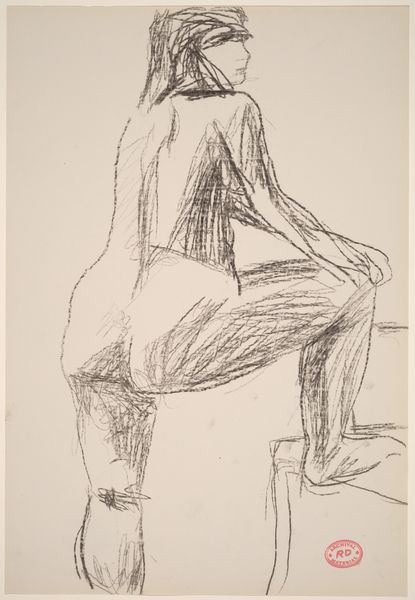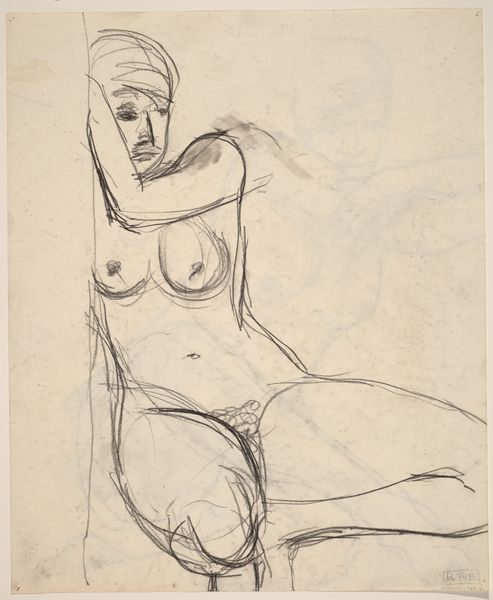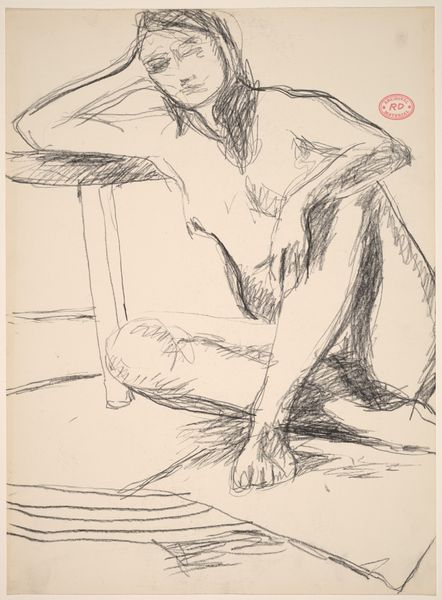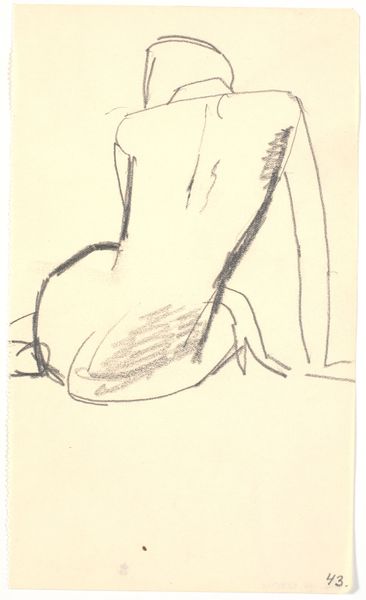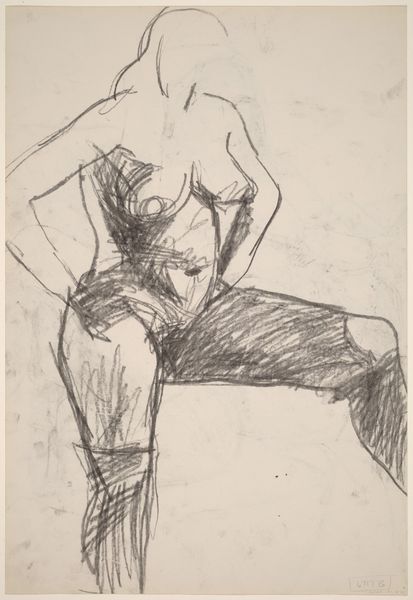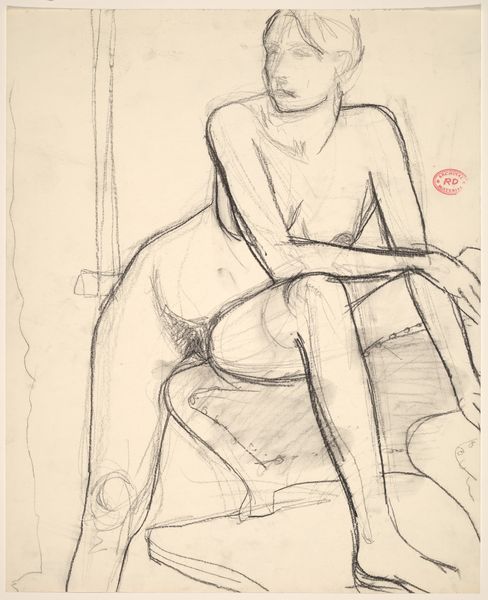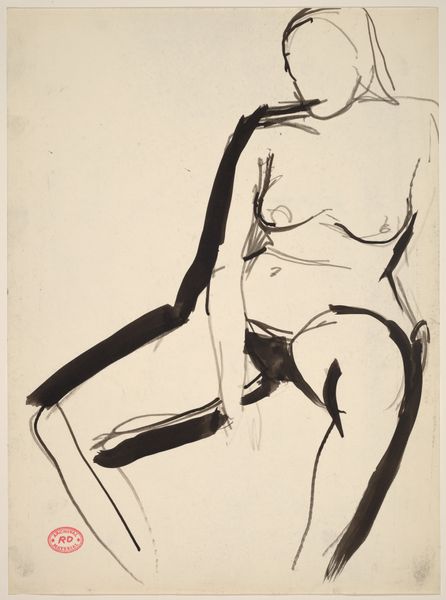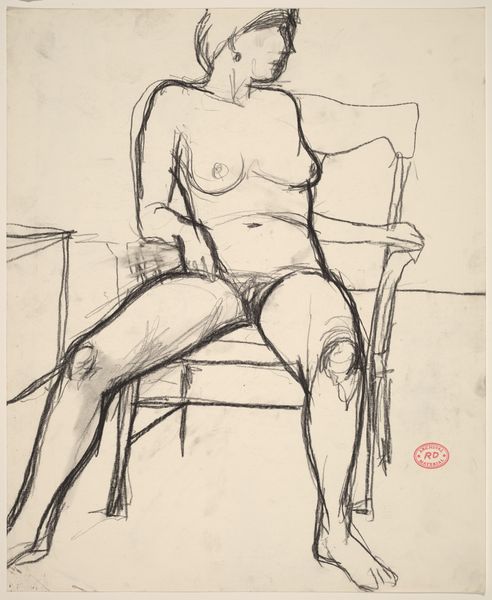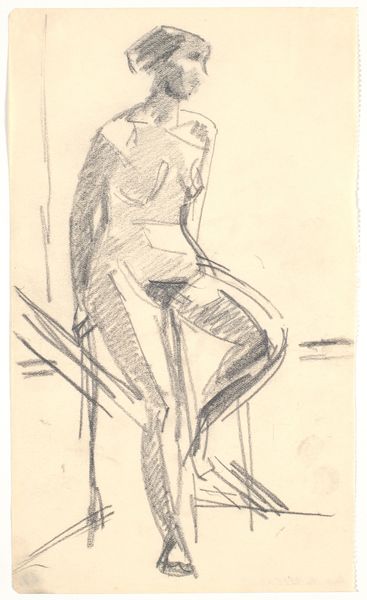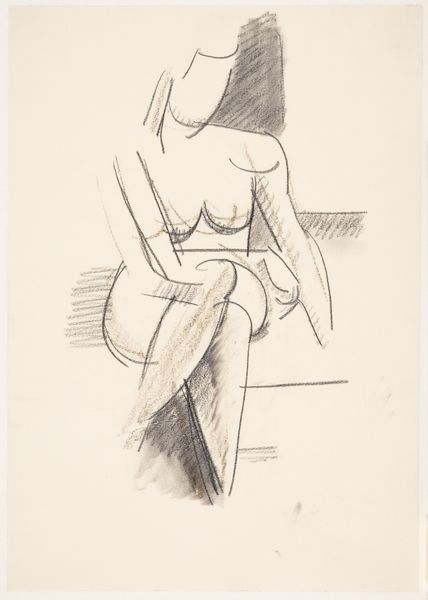
drawing, pencil
#
portrait
#
drawing
#
ink drawing
#
figuration
#
pencil
#
expressionism
#
nude
Dimensions: 209 mm (height) x 124 mm (width) (bladmaal)
Editor: We're looking at Karl Isakson's "Siddende model," a pencil and ink drawing from around 1914-1915. The starkness of the medium and the angular lines give the figure a sense of vulnerability. What do you see in this piece? Curator: It's a compelling study in the evolving representation of the female form during the early 20th century. Think about the socio-political context: the burgeoning feminist movement challenged conventional depictions of women. How do you see Isakson's work engaging with or diverging from those conventional portrayals? Editor: Well, the pose isn't particularly sensual or romanticized; it's rather direct and even a bit stark, as I mentioned before. It feels less like an objectified nude and more like a study of the body. Curator: Precisely. The raw, expressive linework aligns with the growing influence of Expressionism. We should consider how artists started using the nude figure to express psychological states and challenge bourgeois norms. Does the drawing remind you of any particular movements of the time? Editor: I can see some similarities with artists like Schiele or Kokoschka, with the raw and unflinching portrayal of the body. They were exploring themes of anxiety and alienation during a time of great social upheaval. Curator: Indeed. And the fact that this is a drawing, rather than a painting or sculpture, suggests a more intimate and immediate process, perhaps intended for a smaller audience. How does that inform our understanding of the artwork? Editor: That makes sense. Perhaps it’s a preparatory study, something more personal, where Isakson felt freer to experiment without the constraints of public expectation. I definitely have a new appreciation for this sketch. Curator: As do I. Exploring its historical context illuminates Isakson's work, revealing its critical and expressive power within the wider cultural landscape.
Comments
No comments
Be the first to comment and join the conversation on the ultimate creative platform.
